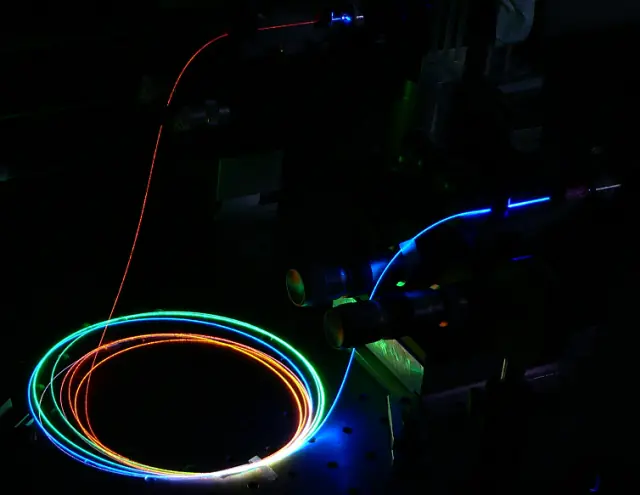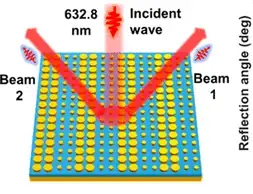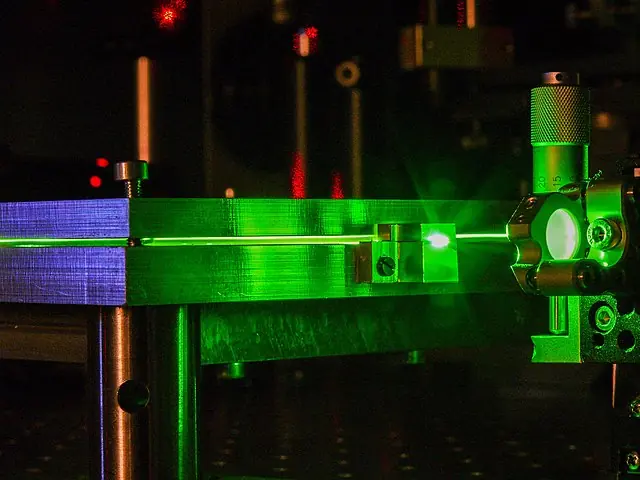New Breakthrough in Fiber Laser Technology: 1 GHz Passively Q-Switched Mode-Locked Laser

Ultrafast lasers operating at gigahertz repetition rates have garnered significant interest due to their various applications in areas such as bio-optical imaging, light communication, material processing, microfabrication, and optical frequency combs. These lasers are essential for providing high-power and high-efficiency pulses, and fiber lasers have become one of the most popular sources for these types of lasers.
In this study, a team of researchers has successfully demonstrated a fiber laser operating at a gigahertz repetition rate. The laser is based on Yb-Mg-doped silica glass, commonly used for high-power pulsed lasers due to the high energy conversion efficiency of the Yb ion. However, one of the major drawbacks of Yb-doped silica glass fiber lasers is the photodarkening effect. This phenomenon occurs when the light transmittance through the fiber decreases over time due to clustering of Yb ions that form non-luminescent centers, which ultimately leads to a reduction in the overall performance of the laser.
The researchers overcame this challenge by constructing a short-length cavity of 100 mm with Yb-Mg-co-doped silica glass fiber, which is resistant to photodarkening. By using a semiconductor saturable-absorber mirror in the cavity, they achieved passively Q-switched mode-locking, which allows for the laser to operate at a fundamental repetition rate of 1 GHz. This is a significant milestone as it is the first time that a Yb-doped silica glass fiber laser has operated at such a high frequency.
The experimental setup consisted of a Yb-Mg-doped silica glass fiber (YbMgSGF) that was fabricated using the zeolite method. This method involves exchanging alkali metal ions with rare earth ions in zeolite, which acts as an ion exchange material. In this study, the researchers used zeolite X, which is composed of Si, Al, Na, and O atoms, and the Yb doping concentration of YbMgSGF was 5.46 wt%.
The laser output power reached 5.93 mW and had a slope efficiency of 3.6%, with a lasing threshold power of 5.3 mW. The oscillation peak wavelength was 1039 nm. The laser oscillation spectra showed asymmetric shapes, which could be attributed to the dispersion of laser pulses in the cavity and unsaturated absorption by the semiconductor saturable-absorber mirror.
In conclusion, the researchers have demonstrated a passively Q-switched mode-locked fiber laser operating at a frequency of 1 GHz using Yb-Mg-doped silica glass as a laser medium and a semiconductor saturable-absorber mirror as a mode-locker. This is a major breakthrough in the field of fiber laser technology, as no Yb-doped silica glass fiber laser has previously operated at such a high frequency. The proposed fiber laser could serve as a seed laser for a master oscillator power amplifier for high-power, high-efficiency pulsed fiber laser sources. The study highlights the potential of Yb-Mg-doped silica glass to overcome the photodarkening effect and offers a new avenue for researchers and engineers to explore in the development of ultrafast lasers.






